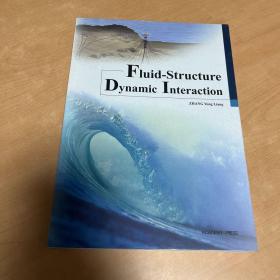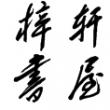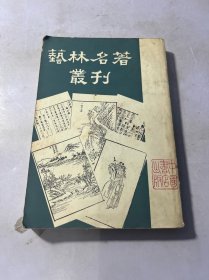
流体结构动力耦合作用(英文版)
¥ 25 5.0折 ¥ 50 九品
仅1件
安徽阜阳
认证卖家担保交易快速发货售后保障
作者张永良 著
出版社学苑出版社
出版时间2010-01
版次1
装帧平装
货号L306
上书时间2023-09-04
- 最新上架
商品详情
- 品相描述:九品
图书标准信息
- 作者 张永良 著
- 出版社 学苑出版社
- 出版时间 2010-01
- 版次 1
- ISBN 9787507733181
- 定价 50.00元
- 装帧 平装
- 开本 16开
- 页数 223页
- 正文语种 英语
- 【内容简介】
- The book aims to aid designers, researchers and postgraduate students of pipes conveying fluid in predicting their dynamic behaviour for various flow velocities, fluid pressures and initial tensions as well as varying geometric and material properties. It also aims to provide practically useful information of interactions between fluids and structures. Throughout,numerical results are carefully compared with experimental observations, and conclusions drawn as to the appropriateness and accuracy of the models used.
- 【作者简介】
- ZHANG YongLiang is Professor of Hydropower Engineering in Tsinghua University and director of the Hydraulics Research Institute.Born in Zhejiang, he received a BSc (Engineering)and MSc degrees from Tsinghua University in 1987 and 1989, respectively, and PhD degree in fluid-strcture interaction from Aberdeen University, United Kingdom in 2000. Zhang worked with consulting civil engineers in Philippines,Sri Lanka and China for seven years prior to starting PhD studies, and pursued PhD and Postdoc for six years in Aberdeen and London.He has been a member the faculty at Tsinghua University since 2003. He has taught courses in Coastal and Offshore Engineering and Science,Computational Fluid Dynamics, Advanced Fluid Mechanics and has authored numerous technical papers and reports in several related fields. His research has often involved fluid mechanics, structural dynamics, wave theory,fluid-structure dynamic interaction and wave energy. He is a Vice president of Hydraulics Professional Committe of China Hydraulic Engineering Association.
- 【目录】
-
List of Principal Symbols
Chapter 1 Introduction
1.1 Background
1.2 Objectives
1.3 Procedures
1.4 Outline of book
Chapter 2 Theoretical model I: elastic tubes conveying steady fluid flow
2.1 Introduction
2.2 Review of previous work
2.3 Basic assumptions and description
2.4 Finite element model development
2.4.1 Order of magnitude analysis
2.4.2 The dynamic equilibrium equation
2.5 Numerical solution
2.5.1 Dynamic response
2.5.2 Eigenvalues and eigenvectors
2.6 Analytical model
2.7 Numerical results
2.8 Conclusions
Chapter 3 Theoretical model H: elastic tubes conveying steady fluid flow
3.1 Introduction
3.2 Model formulation
3.3 A numerical example
3.4 Conclusions
Chapter 4 Theoretical model IH: viscoelastic tubes conveying steady fluid flow
4.1 Introduction
4.2 Finite element model of the system
4.2.1 The e]astic finite element model
4.2.2 Viscoelastic material properties
4.2.3 Single-degree-of-freedom viscoelastic system
4.2.4 Multi-degree-of-freedom viscoelastic system
4.3 A numerical example
4.4 Conclusions
Chapter 5 Experimental model I: tubes conveying steady fluid flow
5.1 Introduction
5.2 Experimental set-up
5.2.1 Hydraulic piping system
5.2.2 Exciting system
5.2.3 Sensing system
5.2.4 Data acquisition and processing system
5.3 Experimental procedures and analysis
5.3.1 Experimental procedures
5.3.2 Experimental analysis
5.4 Experimental measurement range
5.5 Experimental uncertainty
5.6 Experimental results
5.7 Conclusions
Chapter 6 Comparison of experiment and theory: tubes conveying steady fluid flow
6.1 Introduction
6.2 Experimental and theoretical investigation
6.2.1 Experiment
6.2.2 Theory
6.3 Comparison of measured and predicted dynamic response
6.3.1 Effect of initial axial tensions
6.3.2 Effect of flow velocities
6.4 Comparison of measured and predicted natural frequencies
6.4.1 Effect of initial axial tensions
6.4.2 Effect of flow velocities
6.5 Conclusions
Chapter 7 Theoretical model IV: Thin cylindrical shells conveying steady inviscid fluid flow
7.1 Introduction
7.2 Overview of previous work
7.3 Governing equations
7.3.1 Shell equations
7.3.2 Fluid equations
7.4 The method of solution
7.5 Numerical examples
7.5.1 Convergence analysis
7.5.2 Model validation
7.5.3 Effect of initial axial tensions
7.5.4 Effect of hydrostatic pressures
7.5.5 Effect of the flow velocities
7.5.6 Effect of geometric properties
7.5.7 Effect of material properties
7.6 Conclusions
Chapter 8 Theoretical model V: thick cylindrical shells conveying steady inviscid fluid flow
8.1 Introduction
8.2 Overview of previous work
8.3 Formulation of the problem
8.3.1 The shell equation
8.3.2 The fluid equation
8.3.3 Boundary conditions
8.4 Method of solution
8.4.1 Shell domain
8.4.2 Fluid domain
8.4.3 Coupling equation
8.5 Results and discussion
8.5.1 Convergence analysis
8.5.2 Model validation
8.5.3 Effect of flow velocities
8.5.4 Effect of supported conditions
8.5.5 Effect of material properties
8.6 Conclusions
Chapter 9 Comparative study of axisymmetrica thin cylindrical shells containing fluid
9.1 Introduction
9.2 Elemental mass and stiffness matrices
9.2.1 Cylindrical frustum elements
9.2.1.1 Frustum elements based on the Sanders shell theory
9.2.1.2 Frustum elements based on the combination of the Sanders shell theory and FEM
9.2.2 Isoparametric axisymmetrical shell elements
9.3 Free vibration of axisymmetrical shells containing fluid
9.4 Numerical examples
9.5 Conclusions
Chapter 10 Theoretical model VI: cylindrical shells conveying steady viscous fluid flow
10.1 Introduction
10.2 Overview of previous work
10.3 Governing equations
10.3.1 The Navier-Stokes equations
10.3.2 Shell equation
10.3.3 Boundary conditions
10.4 Finite element formulation
10.5 Fluid-structure coupling
10.6 Results and discussion
10.7 Conclusions
Chapter 11 Theoretical model VII: tubes conveying pulsatile viscous fluid flow
11.1 Introduction
11.2 Model formulation
11.3 Methods of solution
11.3.1 Numerical solution I
11.3.1.1 FDM
11.3.1.2 MOC
11.3.1.3 The combination of FDM and MOC
11.3.2 Numerical solution II
11.3.2.1 FEM
11.3.2.2 MOC
11.4 Numerical examples
11.4.1 Large wave speeds
11.4.2 Small wave speeds
11.5 Conclusions
11.5.1 Large wave speeds
11.5.2 Small wave speeds
Chapter 12 Experimental model II : tubes conveying pulsatile fluid flow
12.1 Introduction
12.2 Experimental set-up and procedures
12.2.1 Pulsatile flow system
12.2.2 Instrumentation
12.2.3 Experimental procedures
12.3 Experimental analysis
12.4 Comparisons of measured and predicted results
12.5 Conclusions
Chapter 13 Analysis of transient flow in pipelines with fluid-structure interaction
13.1 Introduction
13.2 Physical model
13.3 Method of solution
13.4 Numerical results
13.4.1 Validation
13.4.2 Damping mechanisms
13.4.3 Effect of Tc
13.5 Conclusions
Chapter 14 Transient flow in rapidly filling air-entrapped pipelines
14.1 Introduction
14.2 Formulation of the problem
14.2.1 Fluid domain
14.2.2 Entrapped air domain
14.3 Coordinate transformation and scaling
14.4 Method of solution
14.5 Numerical results and discussion
14.6 Conclusions
Chapter 15 Theoretical study on charging-up process in pipelines with entrapped air
15.1 Introduction
15.2 Mathematical model
15.3 Method of solution
15.4 Numerical results
15.5 Conclusions
References
Appendix 1 Characteristic equations and the Bessel function
Appendix 2 Isoparametric elements
点击展开
点击收起
— 没有更多了 —




















以下为对购买帮助不大的评价